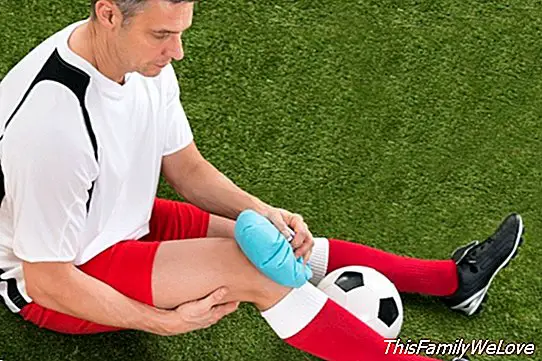When to apply cold or heat in a painful area

Cold and heat calm pain and are one of the main non-pharmacological measures to alleviate it. But, when to use the cold and when the heat? Both relieve for their anti-inflammatory capacity, but cold is recommended to reduce inflammation in case of trauma and heat should be applied to reduce muscle pain.
Of course, never apply on wounds or bleeding.
When and how to apply cold in an injury
"The cold helps to reduce the inflammation of a lesion and to calm the pain thanks to its anti-inflammatory capacity", explains Yolanda Peral, hospitalization supervisor of the University Hospital Quirónsalud Madrid and one of the authors of the Pain Management Protocol, carried out by specialists of the University Hospital Quirónsalud of Madrid.
The cold can be administered wet, with compresses, or dry, through ice bags, and is recommended to reduce inflammation due to trauma, in case of suffering a headache or to prevent the appearance of bruises.
It is advisable to observe the state of the skin before the administration of ice and, if we decide to use cold dry, never do it directly on the skin. The mode of administration should be in alternate periods of between 15 and 20 minutes for about two hours.
Once it has been administered cold it is recommended to dry the skin properly, without rubbing and take special care in Do not administer cold to people with circulation problems because they will worsen and on wounds in the process of healing.
When and how to administer heat in a painful area
The Heat helps relieve pain and muscle spasms. Like cold, it can be administered wet (with compresses or through a bath) or dry (with water bags or the classic bags of seeds).
"The administration of heat is highly recommended to treat the pain of non-traumatic inflammations of the joints; accelerates the drainage of infectious processes and abscesses and relaxes the contracted musculature. The mode of administration, like the cold, is through alternating periods of between 15 and 20 minutes for about two hours ", details Yolanda Esperanza, nursing supervisor of the Intensive and Emergency Care Unit of the Quirónsalud University Hospital Madrid.
Is contraindicated use heat in any wound that blood during the first 24 hours after a wound because it increases blood flow and promotes bleeding. Also in bony prominences because they are areas of reduced sensitivity and favors skin lesions.
In case of intense pain, both cold and heat are methods that can be used in a complementary way to a pharmacological therapy prescribed by a specialist.
Alberto Bartolomé
Advice: Yolanda Peral, hospitalization supervisor of the University Hospital Quirónsalud Madrid andYolanda Esperanza, nursing supervisor of the Intensive Care and Emergency Unit of the Quirón Health University Hospital




